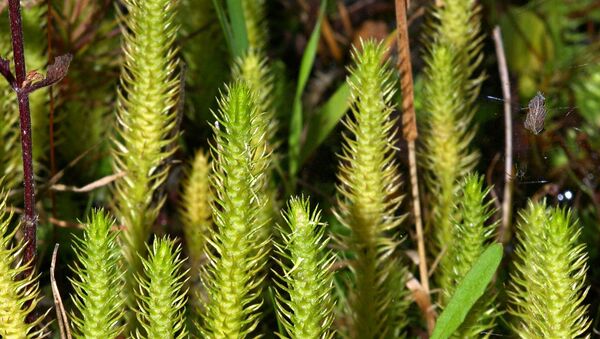Researchers from Sweden and Argentina theoretise that plant life on Earth may by traced back to a super volcano outbreak that happened in a shallow sea outside what is today southern Sweden about 450 million years ago.
“Previously, evidence has been found in the Middle East and South America. But we have found fossil spores that are as old or even slightly older in some cases. So Sweden could be the cradle of all land plants”, Vivi Vajda, a professor of paleobiology at the Swedish Museum of Natural History in Stockholm, told national broadcaster SVT.
About 457 million years ago, during the Ordovician period, a huge volcano outbreak resulted in a ten-metre thick ash layer covering everything all the way to modern-day North America. Today, its remnants are visible in parts of Sweden, such as Kinnekulle and Röstånga in its sourthernmost Skåne County. It is in the yellowish clay between limestone layers that fossil spores from the earliest plants were found.
At that time, continents were still shaping, and Sweden was located south of the Equator on a continent called Baltica. The sea was already teeming with all sorts of animals. By contrast, the land mass mostly consisted of lifeless stone slabs. The volcanic ash that contained phosphorus and nitrogen created soil for the plants to grow in.
“We have both spores from sea algae and from land plants, and they are very different. We have also looked with the electronic microscope so that we can see the really small structures”, Vajda explained.
Ancient plant fossils were preserved over millions of years because they were protected by water, Vajda pointed out. Had they been left on land, they would have been scraped off during the Ice Age that came much later.
The world's budding vegetation was akin to today's mosses and lycopods (also known as lycophita), the oldest lineages of extant plants.
Vivi Vajda's findings include fossil spores considered precursors to today's lycopods. The Natural History Museum has an approximately 430 million-year-old plant which she calls “the missing link” between moss and lycopods.
“This is an important piece of the puzzle! We want to know where and when the development of plants began on land. But since everything is connected in evolution, this says something about the animals' evolution, too”, Vajda concluded.




